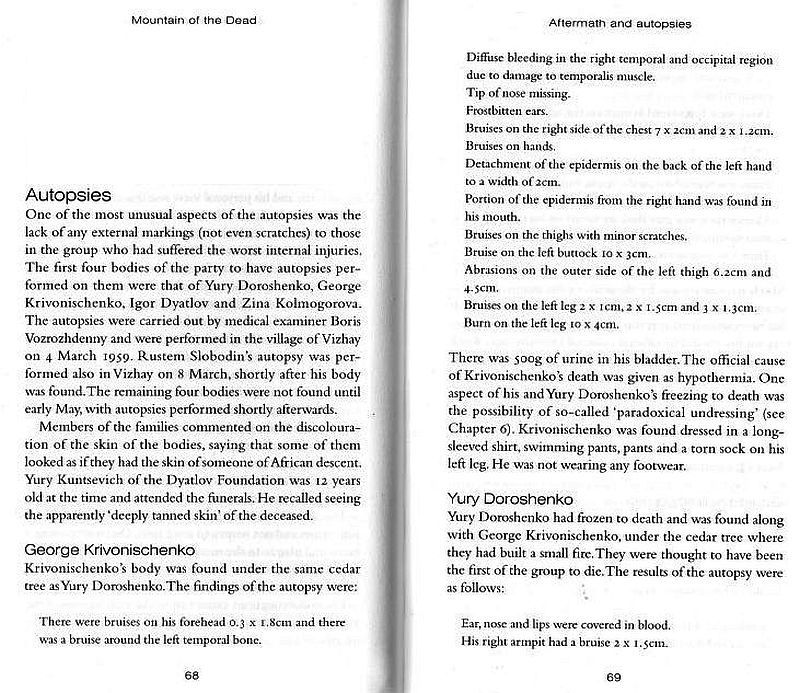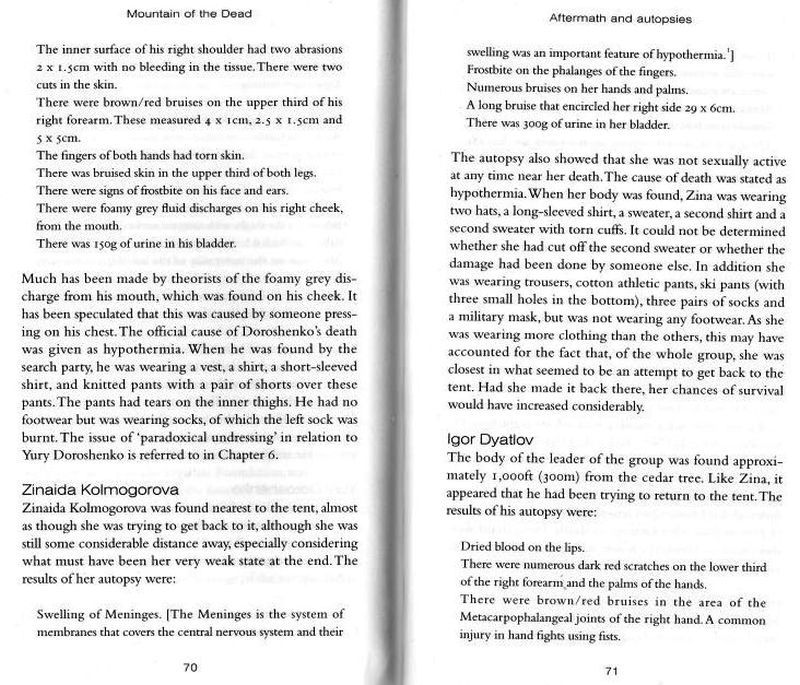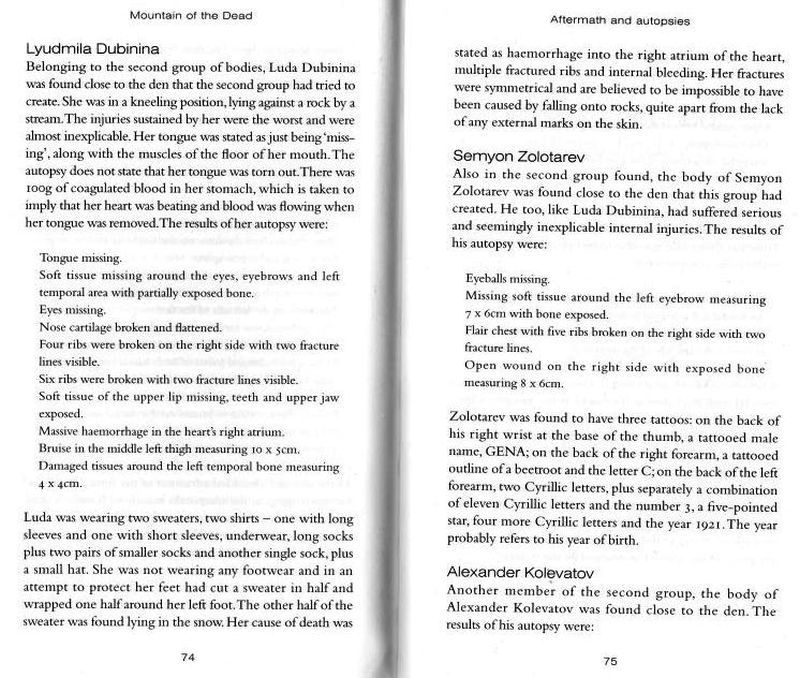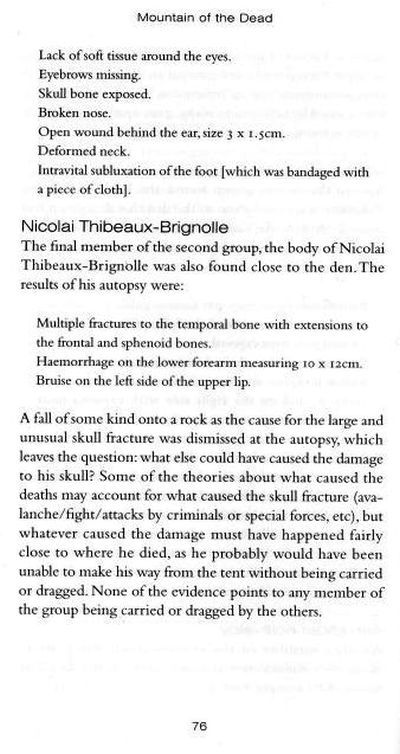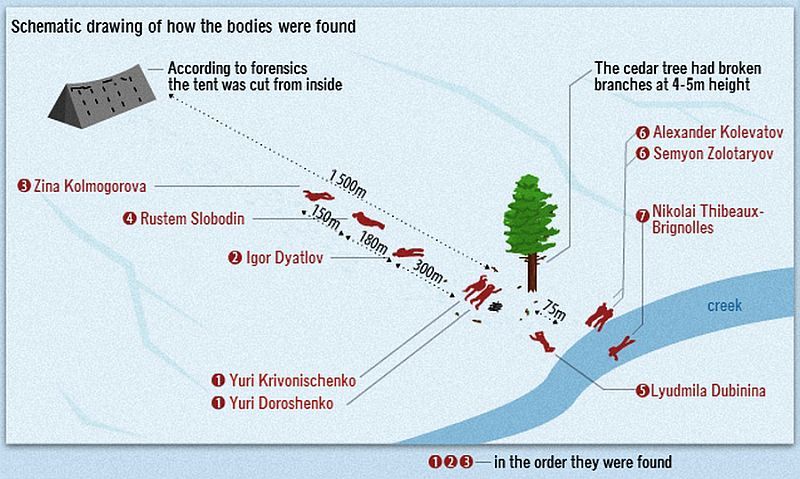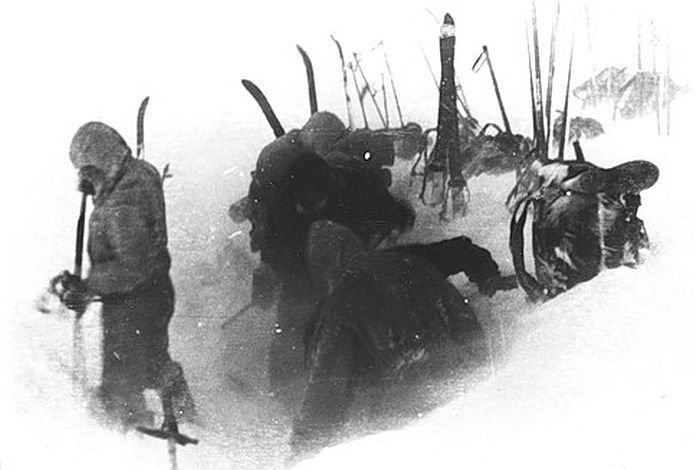CuriousIdent
Not yet SO old Great Old One
- Joined
- Jul 7, 2004
- Messages
- 1,510
- Location
- Warwickshire, England.
1- The lucky 10th member of the group Yuri Yudin later said there were items at the abandoned site that he couldn't identify as belonging to the Dyatlov's. His own theory is that the military were at the tent and were somehow responsible for the deaths.
But were those item not:
1) A pair of glasses - which could very easily have been reading glasses that he hadn't seen anybody in the group use, before the point he left the group?
2) A piece of 'military looking' cloth - Which could have been anything really. And again, having left the group early on he would not have any way of knowing with certainty all of the other clothing the group had with them. And thirdly:
2- A ski pole was found at the site that didn't belong to the Dyatlov's, and it had cut marks on it as if it'd been used as a weapon
Which is a really vague descriptor. You've seen the photographs. The group had many pairs of skis and poles - wedged into the snow while they were seated you can see that. We have also seen the poles used to support ropes from the tent if I recall rightly.
Firstly, again, the likelihood of his knowing in intimate detail what each ski or pole for each person looked like - in detail - is slim.
Secondly, "it had cut marks on it as if it'd been used as a weapon" - How? Like an in impromptu shiv? Like they's sword-fought with them?
and autopsies revealed that several of the group had facial wounds caked with blood, and bruises to their fists as well as broken bones and internal injuries all pointing to a possible fight.
The thing is those same kind of injuries could also be sustained falling down a ravine. Or losing your footing during a landslide.
Snow is not soft. Especially in icy conditions. Falling against it can be a really hard impact. Enough to break a bone if you slip downhill. To crush some internal organs from a hard impact. Anybody who has ever slipped through snow skin first will know that it can break and cut the skin. If a member of the party tried to pound the snow with their fists, hoping to get traction as they slid, it *would* bruise their hands.
The only way you would conclusively prove a fight had occurred would be the evidence of another person's blood, skin or nail in a wound on the body.
3- Further snowfalls, winds and blizzards would have obliterated or messed up many footprints and tracks so we can't be sure which prints and tracks belonged to who.
Not 100%, no. But the main line of tracks for the group we're still visible. It's a long way for a lone individual to trek, in poor weather conditions, to commit a murder of multiple individuals whilst removing or avoiding leaving any traceable evidence that they were ever there. And if it was a group of individual there would definitely be more evidence of their tracks both to the campsite and AT the campsite.
Snow doesn't remove ALL traces.
4- McCloskey says a stolen wallet was involved, but others say it was only a stolen bottle of booze, so who shall we believe?
I believe the Russian account. In translation it absolutely does not mention a wallet. It does mention a bottle. I am really uncertain where the wallet rumour came from. This thread is the only place where I have heard any reference to it.
I'm still trying to get in touch with McCloskey to find out where he got certain bits of information, and if he replies I'll post his comments in this sensational thread..
Sure. Any info is useful.



